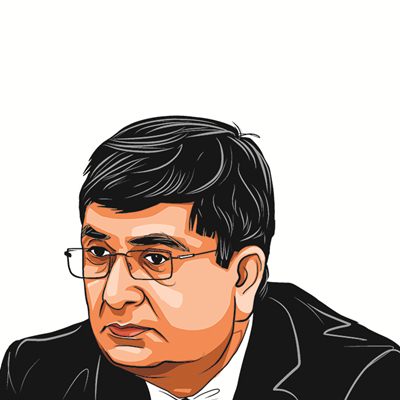Opinion What a potential Trump-Putin summit in Budapest means for Ukraine and Europe
It appears that the US administration is in the process of redefining “victory” in a way that allows Russia, Ukraine and Europe to live with a frozen conflict
 Whether or not the Budapest summit leads to lasting peace in Ukraine, one thing is clear: Europeans have once again been side-lined in the process.
Whether or not the Budapest summit leads to lasting peace in Ukraine, one thing is clear: Europeans have once again been side-lined in the process. For over three years, the European Union (EU) has spearheaded international efforts to support Ukraine and sought to isolate Russian President Vladimir Putin and his economy through 19 rounds of sanctions. The EU also considers Putin a war criminal. Yet, in about two weeks, Putin is set to meet US President Donald Trump in Budapest — the capital of an EU member state — to discuss the war in Ukraine, notably without the EU or Ukrainian President Volodymyr Zelenskyy at the table.
Zelenskyy’s recent meeting with Trump at the White House did not yield any returns for Ukraine, particularly the American long-range Tomahawk missiles. Just before meeting Zelenskyy, Trump had spoken with Putin for more than two hours. In recent weeks, Trump had expressed frustration over Russia’s attacks on Ukraine and said he was “very angry” with Putin. But after talking to him last week, Trump declared, “I think he wants to make a deal.” Following the meeting, Trump wrote on Truth Social, “It is time to stop the killing and make a DEAL! Let them stop where they are, let both sides claim victory, and let history decide.”
According to some reports, Putin is reportedly willing to give up parts of Zaporizhzhia and Kherson currently under Russian control in exchange for full control of Donetsk — a position notably less maximalist than the one he put forward at the Alaska meeting in August. This could be the result of pressure from the US, as well as Russia’s less-than-satisfactory gains on the battlefield in recent months. The Budapest meeting may witness progress towards a ceasefire based on the existing front lines, accompanied by security guarantees from the US and European partners.
It was in Budapest in 1994 that a memorandum on security assurances was signed, under which Ukraine, along with Belarus and Kazakhstan, agreed to give up the nuclear weapons inherited from the Soviet Union. Sensing a major setback to Europe’s efforts, Zelenskyy promptly held a virtual meeting with leaders of the UK, Germany, Italy, Poland, and Finland, as well as with the NATO Secretary-General and top EU officials. The Budapest meeting is turning into a diplomatic headache for Europeans, who may have to grant travel permits to Putin — risking Trump’s displeasure if they refuse. This could also reinforce the Russian narrative that it is the EU that is creating obstacles to peace.
So far, the European Commission has officially welcomed any initiative that could bring about a “just and lasting peace for Ukraine,” even if it “does not always occur in the desired format.” The EU airspace currently remains closed to Russian aircraft. Ahead of the EU foreign ministers’ meeting in Luxembourg, the EU foreign policy chief Kaja Kallas said a possible Putin visit to Budapest is “not nice”. Lithuanian Foreign Minister Kęstutis Budrys added, “The only place for Putin in Europe is The Hague, in front of the tribunal — not in any of our capitals.”
Elated by these developments, Hungarian Prime Minister Viktor Orbán, a vocal critic of EU support for Ukraine, asserted that Budapest is currently the only place in Europe where such a meeting could take place, as “Hungary has been consistently, openly, vocally, and actively advocating for peace for three years.” A right-wing populist, Orban is one of the few leaders in the EU who maintains close relations with Putin. Last year, during the Hungarian presidency of the European Council, he undertook a self-described “peace mission” to help resolve the Russia-Ukraine conflict, visiting Moscow, Kyiv, Ankara, Beijing, and the US. European Commission President Ursula von der Leyen had labelled this an appeasement mission. Orban is also against the promise of EU membership to Ukraine and the meeting comes at an opportune moment as he faces a challenging election next year.
Whether or not the Budapest summit leads to lasting peace in Ukraine, one thing is clear: Europeans have once again been side-lined in the process. Although they managed to secure Trump’s support for Ukraine for a while, their illusion of playing a central role in resolving the conflict may be fading fast.
It appears that the US administration is in the process of redefining “victory” in a way that allows Russia, Ukraine and Europe to live with a frozen conflict. The real challenge, however, will be for Ukraine to come to terms with its lost territory and for NATO to live with the threat of potential Russian aggression. In the process, Russia’s territorial gains may effectively be legitimised, while the US positions itself as the ultimate mediator of a major European conflict.
The writer is Professor and Jean Monnet Chair at the Centre for European Studies, Jawaharlal Nehru University






